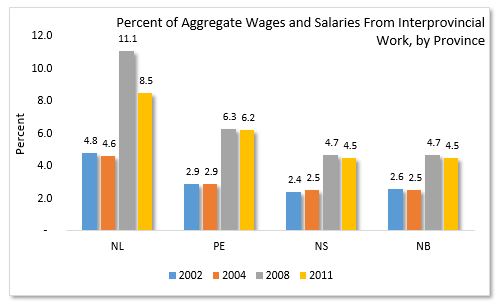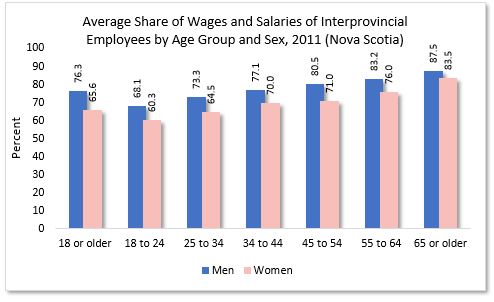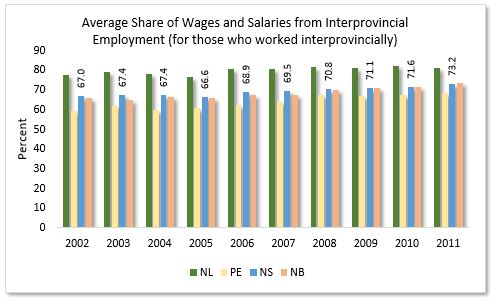For additional information relating to this article, please contact:
June 29, 2015STUDY: INTERPROVINCIAL EMPLOYMENT IN CANADA, 2002-2011 This article in the Economic Insights series presents an overview of interprovincial paid employment over the 2002-to-2011 period. Interprovincial workers are individuals who maintain a permanent residence in a given province or territory but work in another. The results are based on Statistics Canada’s Canadian Employer-Employee Dynamics Database and pertain to employees aged 18 or older who earned at least $1,000 in 2002 dollars.
Across Canada in 2011, there were over 420,000 interprovincial workers. This figure has fallen from the recent peak of 445,000 in 2008. Interprovincial employees can be correlated with employment related to natural resource extraction in Alberta. Throughout the last decade, interprovincial workers have increased in number along with the price of oil. Interprovincial work in Alberta accounted for two thirds of the growth of interprovincial workers from 2004 to 2008 (Chart Source: Statistics Canada).

In 2011, there were 21,808 interprovincial employees from Nova Scotia. This figure has been on the rise, but is far below the peak of 24,339 in 2008 when the recession occurred.

Interprovincial workers are a substantial component of the Nova Scotia workforce. In 2011, 4.5 per cent of wages and salaries earned by Nova Scotians were earned through interprovincial employment. At 8.5 per cent, Newfoundland and Labrador interprovincial employees earned the highest percentage of their income from work in other provinces.

Nova Scotia men are more likely to work interprovincially: among those 18 and older, 7.3 per cent of the male workforce worked interprovincially, while 3.4 per cent of the female workforce did so (2002-2011 averages). For both men and women, the age cohort with the highest proportion of interprovincial workers is the 18-24 cohort.

Those who worked interprovincially claimed a majority of their total annual wages and salaries from interprovincial work. For Nova Scotia male interprovincial workers, 76.3 per cent of wages and salaries were earned through interprovincial work. For females, this number was 65.6 per cent (2011).

Compared to other Atlantic provinces, Newfoundland and Labrador showed the highest proportion of wages and salaries from interprovincial employment (for those who worked interprovincially). For the study's time period, the average share of interprovincial earnings was 79.9 per cent for Newfoundland and Labrador residence interprovincial workers. For Nova Scotia, the 2002-2011 average was 69.4 per cent.

The study, Interprovincial Employment in Canada, 2002-2011 is available from the Statistics Canada website. Click here for more information.